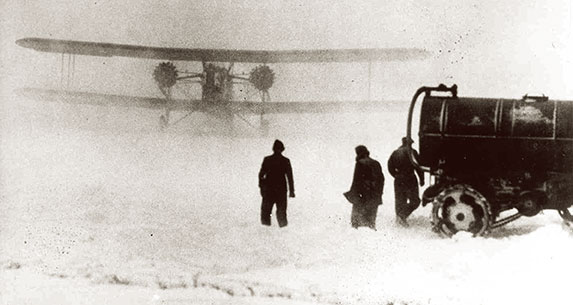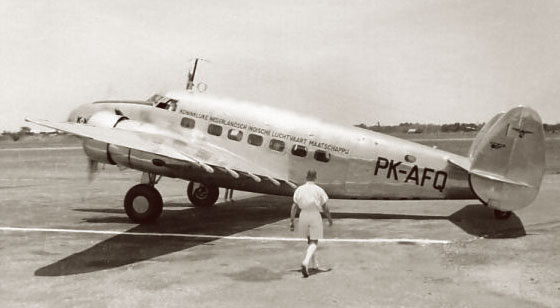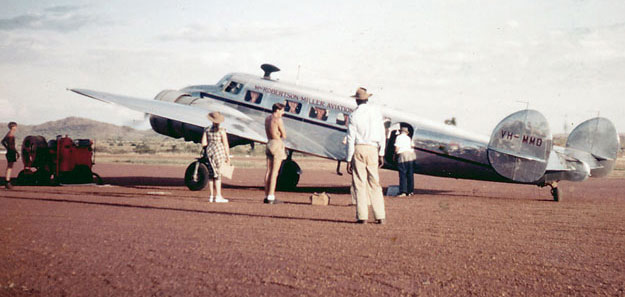- AUST POST SHIPPING
- 0438 654 235
- info@recoverycurios.com
- P.O. Box 7640 Cairns QLD Australia, 4870
-
0
Shopping Cart


LOCKHEED ELECTRA

 One of the most iconic and beautifully sculptural civilian aircraft of the 1930s was the Lockheed Electra, the American all-metal monoplane airliner developed by the Lockheed Aircraft Corporation.
One of the most iconic and beautifully sculptural civilian aircraft of the 1930s was the Lockheed Electra, the American all-metal monoplane airliner developed by the Lockheed Aircraft Corporation.
Designed to compete with the Boeing 247 and Douglas DC-2 of the era. The Electra was the first all-metal, twin engined aircraft Lockheed had ever built.
The name Electra came from a star in the Pleiades. The prototype made its first flight on February 23, 1934.
 Wind-tunnel work on the Electra was undertaken at the University of Michigan. Much of the work was performed by a student assistant, Clarence Johnson. He suggested Lockheed change the single tail to double tails which was to become a Lockheed trademark as seen in the Lockheed Hudson and twin boom-tailed Lockheed P-38 Lightning. This change was incorporated into the production aircraft and Johnson went on to become Lockheed’s principal designer.
Wind-tunnel work on the Electra was undertaken at the University of Michigan. Much of the work was performed by a student assistant, Clarence Johnson. He suggested Lockheed change the single tail to double tails which was to become a Lockheed trademark as seen in the Lockheed Hudson and twin boom-tailed Lockheed P-38 Lightning. This change was incorporated into the production aircraft and Johnson went on to become Lockheed’s principal designer.
 The Electra was the first commercial passenger aircraft with retractable landing gear to come equipped with mudguards as standard equipment and was perfectly placed to take advantage of a 1934 US government ban on single engined aircraft for use in carrying passengers or in night flying.
The Electra was the first commercial passenger aircraft with retractable landing gear to come equipped with mudguards as standard equipment and was perfectly placed to take advantage of a 1934 US government ban on single engined aircraft for use in carrying passengers or in night flying.
 The ban had occurred after a Senate investigation found senior politicians had met secretly with a cabal of large airline companies to divide up the lucrative air mail delivery routes to the exclusion of smaller competitors.
The ban had occurred after a Senate investigation found senior politicians had met secretly with a cabal of large airline companies to divide up the lucrative air mail delivery routes to the exclusion of smaller competitors.
Congress was in uproar and the mail delivery contracts were quickly withdrawn but without any real appreciation of the challengers of night flying in all weather conditions and the specialised pilot training required,  Congress charged the United States Army Air Corp to take over the routes. It was a disastrous decision.
Congress charged the United States Army Air Corp to take over the routes. It was a disastrous decision.
Like most western countries after WWI, the US military had undergone a dramatic drawdown of pilots, equipment and budgets, leaving all services severely underfunded and under resources, The US Army Air Corp were no exception.
 US mail was traditionally flown overnight and with a limited number of surplus WWI aircraft, undertrained junior pilots with no real experience of adverse weather or night flying, the Air Corp were in no position to deliver on Congresses orders.
US mail was traditionally flown overnight and with a limited number of surplus WWI aircraft, undertrained junior pilots with no real experience of adverse weather or night flying, the Air Corp were in no position to deliver on Congresses orders.
Within a space just a month, 13 Air Corp pilots had lost their lives and the government were forced to return the airmail service to the private sector but they did this under new conditions which had a significant impact on US aviation.
Contract bidding was restructured resulting in a fairer tender process with restrictions placed on passengers being carried on unsafe aircraft, a ban on night flying of single engine aircraft and a national overhaul of civilian and pilot training was also implemented.
 Aircraft manufacturers responded to the challenge. There were so many improvements to aircraft in the 1930s that many believe it was the most innovative period in aviation history. Air-cooled engines replaced water-cooled engines, reducing weight and making larger and faster planes possible. Cockpit instruments also improved, with better altimeters, airspeed indicators, rate-of-climb indicators,
Aircraft manufacturers responded to the challenge. There were so many improvements to aircraft in the 1930s that many believe it was the most innovative period in aviation history. Air-cooled engines replaced water-cooled engines, reducing weight and making larger and faster planes possible. Cockpit instruments also improved, with better altimeters, airspeed indicators, rate-of-climb indicators,  compasses, and the introduction of artificial horizon, which showed pilots the attitude of the aircraft relative to the ground — important for flying in reduced visibility.
compasses, and the introduction of artificial horizon, which showed pilots the attitude of the aircraft relative to the ground — important for flying in reduced visibility.
Aircraft radio communications were also dramatically improved and it was soon discovered that radio could also be used to aid navigation when visibility was poor by the placement across the country of a serious of radio beacons that transmitted directional beams that pilots and navigators could home in on and follow to their destination.
Boeing released their twin engined, 247 passenger aircraft which featured cabin insulation to reduce engine noise, upholstered seats and variable pitch propellers to reduce take off distances, increase the aircraft's rate of climb and boosted cruising speeds. Boeings 247 carried 10 paying passengers and was the forerunner to the modern passenger airlines of today.
 The race was on and other manufacturers quickly followed suit. One of these was Lockheed with its new Model 10 Electra which could carry 10 passengers plus 670 lb of mail and baggage and had a crew of two.
The race was on and other manufacturers quickly followed suit. One of these was Lockheed with its new Model 10 Electra which could carry 10 passengers plus 670 lb of mail and baggage and had a crew of two.
In May 1937, H.T. "Dick" Merrill and J.S. Lambie accomplished a round-trip crossing of the Atlantic Ocean. The feat was declared the first succdessful round-trip  commercial crossing of that ocean by any aircraft. It won them the Harmon Trophy. On the eastbound trip, they carried newsreels of the crash of the Hindenburg, and on the return trip from the United Kingdom, they brought photographs of the coronation of King George VI.
commercial crossing of that ocean by any aircraft. It won them the Harmon Trophy. On the eastbound trip, they carried newsreels of the crash of the Hindenburg, and on the return trip from the United Kingdom, they brought photographs of the coronation of King George VI.
 The Electra was a huge success and orders from across the country and around the globe were soon rolling in from both civilian and military operators including Australia’s fledgling Ansett Airways, Qantas Empire Airways.
The Electra was a huge success and orders from across the country and around the globe were soon rolling in from both civilian and military operators including Australia’s fledgling Ansett Airways, Qantas Empire Airways.
Probably the most famous use of the Electra was the highly modified Model 10E flown by aviatrix Amelia Earhart. In July 1937, she disappeared in her Electra during an attempted round-the-world flight and the mystery of her flight disappearance remains with us even today.
 Many Electras and their design descendants including the 12 Electra Junior and 14 Super Electra were pressed into military service during World War II. By the end of the war, the Electra design was already obsolete, although many smaller airlines and charter services continued to operate Electras into the 1970s and teh aircrfat remained popular with celebrities and royalty in Asia and Europe as an iconic 1930s classic design. Lockheed built a total of 149 Electras.
Many Electras and their design descendants including the 12 Electra Junior and 14 Super Electra were pressed into military service during World War II. By the end of the war, the Electra design was already obsolete, although many smaller airlines and charter services continued to operate Electras into the 1970s and teh aircrfat remained popular with celebrities and royalty in Asia and Europe as an iconic 1930s classic design. Lockheed built a total of 149 Electras.
 All Lockheed Electra instruments listed below come complete with a detailed, custom-built Scale Model of the Lockheed Electra on its Magnetic Display Arm; Mango Wood Display Stand & Plaque, plus Printed Fact Sheet featuring photo of instrument in aircraft cockpit - as shown in this B24 example here:
All Lockheed Electra instruments listed below come complete with a detailed, custom-built Scale Model of the Lockheed Electra on its Magnetic Display Arm; Mango Wood Display Stand & Plaque, plus Printed Fact Sheet featuring photo of instrument in aircraft cockpit - as shown in this B24 example here:
Return to VINTAGE ORIGINAL AIRCRAFT INSTRUMENTS
- LAND
- SEA
- AIR
- VINTAGE ORIGINAL AIRCRAFT INSTRUMENTS
- HAWKER TYPHOON
- VICKERS WELLINGTON
- FAIREY GANNET
- RYAN ST-A SPORTS TRAINER
- DE HAVILLAND TIGER MOTH
- HAWKER HUNTER
- Mc DONNELL DOUGLAS KC-10 AERIAL TANKER
- SOPWITH CAMEL
- AIRCO DH.1 AND DH.2
- JUNKERS JU 87
- CURTISS C-46 COMMANDO
- HANDLEY PAGE HAMPDEN
- SUPERMARINE SEAFIRE
- B-25 MITCHELL BOMBER
- BRISTOL BLENHEIM
- ENGLISH ELECTRIC LIGHTNING
- HAWKER TEMPEST MkVI
- YAKOVELOV YAK - 3
- FOCKE-WULF FW190
- FOLLAND GNAT
- AIRSPEED OXFORD
- SHORT STIRLING
- AVRO ANSON
- DOUGLAS C-133 CARGOMASTER
- HANDLEY PAGE VICTOR BOMBER
- DE HAVILLAND SEA VENOM
- VICKERS VALIANT BOMBER
- DOUGLAS A-26 INVADER
- GRUMMAN S2F TRACKER
- SUPERMARINE SPITFIRE
- LOCKHEED P2-V NEPTUNE
- P-51 MUSTANG
- BRISTOL BEAUFIGHTER
- DE HAVILLAND MOSQUITO
- B-26 MARTIN MARAUDER
- P3 ORION
- DOUGLAS A-20 HAVOC
- P-39 AIRACOBRA
- AVRO SHACKLETON
- B-17 FLYING FORTRESS
- B-24 LIBERATOR
- MESSERSCHMITT BF-110
- MESSERSCHMITT BF-109
- BRISTOL BEAUFORT
- KAWASAKI Ki-45 (NICK) INTERCEPTOR
- C-130 HERCULES
- CAC BOOMERANG
- AVRO LANCASTER
- GRUMMAN F4F WILDCAT
- F4U VOUGHT CORSAIR
- WESTLAND LYSANDER
- P-47 REPUBLIC THUNDERBOLT
- NORTH AMERICAN T-6 TEXAN - HAVARD
- C-47 SKYTRAIN
- DOUGLAS SBD DAUNTLESS
- CAC WIRRAWAY
- PBY CATALINA
- P-40 WARHAWK
- FAIREY SWORDFISH
- P-38 LIGHTNING
- HAWKER HURRICANE
- CURTISS SB2C HELLDIVER
- GRUMMAN F6F HELLCAT
- SEAKING HELICOPTER
- SEAHAWK HELICOPTER
- DOUGLAS A4G SKYHAWK
- GRUMMAN TBF AVENGER
- HANDLEY PAGE HALIFAX
- DOUGLAS SKYRAIDER AE-1
- GLOSTER METEOR
- JUNKERS JU-88
- F-86 SABRE JET
- SHORT SUNDERLAND
- B-29 SUPER FORTRESS
- F-9F GRUMMAN PANTHER
- F-100D SUPER SABRE
- BELL UH-1 HUEY HELICOPTER
- AVRO VULCAN STRATEGIC BOMBER
- CANBERRA BOMBER
- DHC-4 CARIBOU
- BLACKBURN BUCCANEER
- DE HAVILLAND VAMPIRE JET
- HAWKER SEA FURY
- LOCKHEED HUDSON
- LOCKHEED EC-121 WARNING STAR
- SEPECAT JAGUAR
- HAWKER SIDDELEY NIMROD
- HAWKER SIDDELEY HARRIER
- ARADO AR 196
- VOUGHT OS2U KINGFISHER
- LOCKHEED ELECTRA
- NORTHROP P-61 BLACK WIDOW
- BOEING CH-47 CHINOOK
- LOCKHEED PV-1 VENTURA
- BOEING P26-A 'PEASHOOTER'
- Ilyushin Il-2 ‘Sturmovik’
- WESTLAND WESSEX
- FAIREY FIREFLY
- VINTAGE AVIATION COLLECTABLES
- VINTAGE COLLECTABLE MODEL AIRCRAFT KITS
- RETRO STYLE METAL AIRCRAFT COLLECTABLES
- VINTAGE ORIGINAL AIRCRAFT INSTRUMENTS
